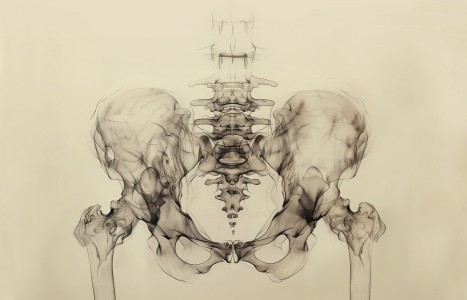People today want convenience, whether it be from their bank, credit card, favorite retail store, or restaurant. They demand it from the companies who hold their loyalty, including their health care providers (you). They don’t want to call and possibly be put on hold, and they want to use an app or schedule an appointment on your website. Here are three reasons your practice can gain by switching to online appointment scheduling.
Chinese Medicine Treatment of Herpes Zoster and Complications (Pt. 2)
Editor's Note: The following was written by Dr. Lee Chen-Yu and translated / edited by Scott Herbster. Part 1 appeared in the December 2022 issue.
Complication: Phantom Pain (Postherpetic Neuralgia)
In some cases of herpes zoster, after all visible signs of the rash and vesicles have resolved, patients may experience phantom pain (postherpetic neuralgia).1 Western medicine treatment includes administration of drugs such as tricyclic antidepressants, anticonvulsants, morphine, and intrathecal glucocorticoid injections. If these approaches are not effective, then more invasive procedures may be attempted, such as spinal cord stimulation, nerve block or deep brain stimulation.3

These Western medicine drugs and procedures come with potentially severe side effects, whereas Chinese medicine treatment is relatively simple and provides quick, effective relief without the side effects. Chinese medicine treatment of phantom pain involves a dual approach comprising the administration of medicinals and acupuncture.
Oral Formulas: For the oral administration of medicinals, the physician must determine whether this phantom pain is either the result of simply hypersensitivity or some type of unchecked inflammatory response and/or anatomical derangement caused by fibrosis.2
Patients whose phantom pain is caused by hypersensitivity tend to have milder and less-well-defined episodes of "phantom" pain. For these patients, the physician should take into consideration the personality and character traits of the patient. Does the patient have a high-strung personality (e.g., nervous or sensitive temperament, easily agitated) or a low-spirited personality (e.g., a tendency toward emotional depression)?
A high-strung personality type can be identified as hyperactivity of liver yang pattern, requiring the administration of formula variants such as Chai Hu Jia Long Gu Mu Li Tang, Wen Dan Tang, or even Jian Ling Tang. Once the patient's condition has shown improvement, then combine the above formula with Zhi Bo Di Huang Tang (decoction or pills).
A low-spirited personality type can be identified as liver depression and qi stagnation pattern, requiring the administration of formula variants such as Gui Zhi Jia Long Gu Mu Li Tang, Chai Hu Gui Zhi Tang, or Gan Mai Da Zao, combining Ban Xia Hou Po Tang and making sure to include Da Zao, Long Yan Rou, and possibly even Gan Jiang, Fu Zi, Rou Gui, Huang Qin, and Ren Shen.
If the emotional depression worsens, then add large doses of Da Zao (over 40 pieces if necessary), Long Yan Rou (2-3 liang), and Chi Sha Tang (brown sugar) (8 qian to 1 liang or more if necessary). Once the patient's condition has shown improvement, then combine the above formula with You Gui Yin or Shen Qi Wan (decoction or pills).
These compound formulas will provide more effective and lasting treatment. Naturally, prescribing formulas such as Si Qi Tang, Xiao Chai Hu Tang and Xiao Yao San are also possibilities, but these will likely only be effective for milder cases.
For patients whose phantom pain is caused by the presence of an unchecked inflammatory response at the neuronal level that results in spinal or ganglionic hyperexcitability (i.e., residual heat pattern)2 and/or an anatomical derangement caused by fibrosis and other structural changes (e.g., myelin and axon deficiency and dorsal horn atrophy),3 you should prescribe Xian Fang Huo Ming Yin, adding Quan Xie, Wu Gong, and Bai Jiang Can, and large doses of Da Zao, Long Yan Gan, and Chi Sha Tang (brown sugar).
Acupuncture: As for acupuncture, regardless of the pattern type, select acupoints along channels that correspond with the location of phantom pain, along with heart-calming, spirit-quieting [e.g., Shen Men (HT 7), Nei Guan (P 6)] and liver and heart depression-relieving [e.g., Tai Chong (LV 3), San Yin Jiao (SP 6)] acupoints.
A final consideration: There is one more vital element in this therapeutic regimen: Yu Sheng Wan – a pill composed of Jin Yin Hua (Datura metel L.) (0.04 g/pill), Shan Yao (0.6 g/pill) and Feng Mi (honey). Yu Sheng Wan provides excellent efficacy in the treatment of phantom pain for patients of all pattern types. In fact, for best results, you can begin prescribing this pill along with the main formula at the onset of the herpes zoster infection.
Yu Sheng Wan promotes cerebral collateral circulation and recalibrates autoregulation in the brain to initiate nerve repair and regeneration, improve cerebrovascular circulation, and regulate neuroendocrine imbalances.
Complication: Bacteremia, Sepsis, Encephalitis, and Meningitis
Itching causes the lesion to rupture and ooze exudates. If treatment is not provided in time or if hygienic conditions are poor, then secondary bacterial infection may occur, resulting in bacteremia or even sepsis, which can lead to encephalopathy (e.g., encephalitis, meningitis), a potentially life-threatening condition.
In Chinese medicine, bacteremia and sepsis can be identified as heat toxin entering the heart or running yellow entering the abdomen; and encephalopathy can be identified as heat toxin entering the brain and construction-blood.
- If secondary bacteremia or sepsis does develop from herpes zoster lesions, then simply add large doses of Huang Qin, Huang Lian and Huang Bo (a total of 1.5 to 2.5 liang) into the main formula (e.g., Long Dan Xie Gan Tang, Huang Lian Jie Du Tang).
- If symptoms of blood heat (e.g., heart vexation, agitated movement of the limbs and mania, generalized heat worsening at night, crimson tongue) present, add large doses of Mu Dan Pi and Zhi Zi (or Di Gu Pi, Qing Hao and Sheng Di Huang).
- If cough and panting present, add Ma Huang, Xing Ren, Ting Li Zi and Fang Ji.
- If short, hasty breathing and panting with raised shoulders present, add dampness-disinhibiting by bland percolation medicinals such as Fu Ling, Zhu Ling, Ze Xie, Bai Zhu, and Cang Zhu.
- If thick, black tongue fur (i.e., extreme heat with desiccation of liquid) presents, change the formula to Chai Ling Tang, adding large doses of Huang Qin, Huang Lian and Huang Bo, along with Da Huang (incrementally increasing the dose until the patient maintains 7-8 stools per day). Once the patient's bowel movements change from stool like sheep's droppings to maintaining 3-4 watery stools per day, you know it is time to switch back to the main formula.
Patients who develop encephalopathy (e.g., encephalitis, meningitis) may present with signs and symptoms such as high fever, delirium, neurologic deficits, increased intracranial pressure, meningismus (nuchal rigidity, headache and photophobia), ataxia, and seizures.1 Among the many potential Chinese medicine pathologic descriptions of these signs and symptoms are "clouded spirit and delirious speech," "picking at bedclothes" and "groping in the air."
For these patients, change the formula to Chai Ling Tang variant; if this is ineffective, add Tian Ma and Quan Xie, Wu Gong, and Bai Jiang Can. You can also prescribe a large dose of Jin Yin Hua (or Ju Hua) (clears heat and resolves toxins; dissipates welling-abscesses and disperses swelling) or Tian Hua Fen (clears heat and engenders liquid; clears the lung and moistens dryness; and resolves toxin and disperses welling-abscesses), instructing the patient to decoct and drink as a tea.
Clinical Pearls
Chinese medicine treatment of herpes zoster expedites the resolution of acute symptoms (e.g., pain, paresthesia, erythematous maculopapular rash, vesicular lesions, itching) and prevents the manifestation of severe complications. It can also provide effective treatment for complications that may present, such as postherpetic neuralgia (phantom pain), bacteremia, sepsis, encephalitis, and meningitis.
References
- Shingles (Herpes Zoster). Amboss.com.
- Chen-Yu L. "An Introduction to Dr. Lee Chen-Yu's Shao Yang Heat Pattern Theory (Pt. 1, Pt. 2)." Facebook, June 27, July 10, 2021.
- Gruver C, Guthmiller KB. Postherpetic Neuralgia. StatPearls [Internet]. Treasure Island, FL: StatPearls Publishing, January 2022.



